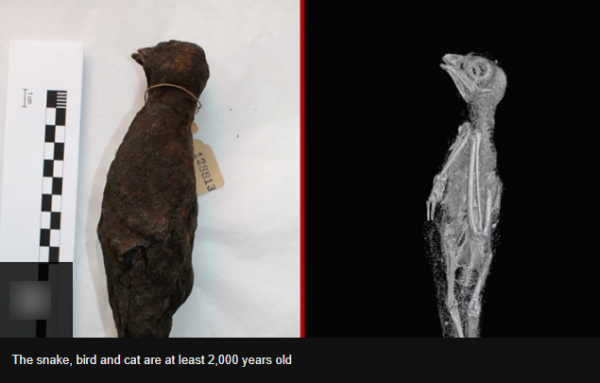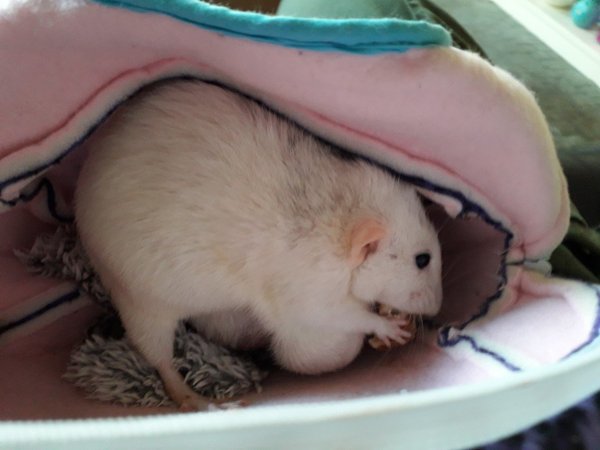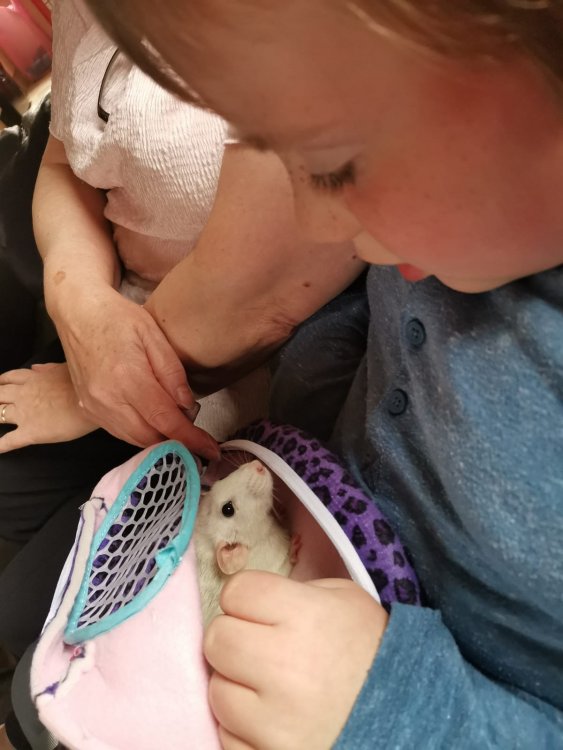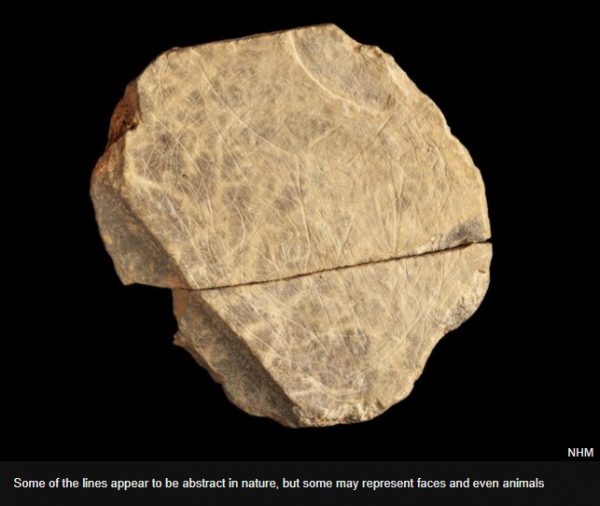-
Posts
20,851 -
Joined
-
Last visited
-
Days Won
49
Everything posted by CaaC (John)
-

Manchester United Discussion
CaaC (John) replied to a topic in Premier League - English Football Forum
Paul Pogba: Manchester United midfielder tests positive for coronavirus Manchester United midfielder Paul Pogba has tested positive for coronavirus, says France manager Didier Deschamps. The 27-year-old will have to self-isolate for 14 days. He will miss France's Nations League game in Sweden on Saturday, 5 September and the home game against Croatia three days later. However, Pogba could be eligible for selection for United's Premier League opener against Crystal Palace at Old Trafford on 19 September. Pogba will be replaced in the France squad by 17-year-old Rennes' midfielder Eduardo Camavinga. https://www.bbc.co.uk/sport/football/53932853 -
New aerial surveys of Australia's Great Barrier Reef show the most widespread and severe bleaching the coral reef has experienced. The damage follows record high temperatures in February. Scientists at James Cook University have issued a dire warning about the threat posed by climate change to the world's largest living organism and say temperatures over the next month are critical to how the reef recovers.
-
- 1,657 replies
-
- space exploration
- astronomy
-
(and 1 more)
Tagged with:
-
I won't tell her that... just yet.
-
Just told the wife that there maybe a Hurrican Laura backlash on the way, she hates thunder & lightening and she said "FFS..."
-
Bloody wet and windy here, looks like we are getting the back-end of Hurrican Laura, and looking at @Stan's lightning map the coast of the good old USA is getting hit. https://www.lightningmaps.org/#m=oss;t=3;s=0;o=0;b=0.00;ts=0;y=0.3516;x=-0.2637;z=3;d=2;dl=2;dc=0;
-
Ancient Egypt: Mummified animals 'digitally unwrapped' in 3D scans VIDEO Three mummified animals from ancient Egypt have been digitally unwrapped and dissected by researchers using high-resolution 3D scans. The snake, bird and cat, from the Egypt Centre's collection at Swansea University, are at least 2,000 years old. Ancient texts suggest they were offerings to the souls of the departed, but little was known of their fate. Researchers said the details revealed by the scans were "extraordinary". Using micro CT scanners, which generate 3D images with 100 times the resolution of medical CT scans, the animals' remains were analysed in previously unseen detail, giving an insight into how they were killed and the ritual behind it. FULL REPORT
-
Ancient galaxy is quite chill, actually The galaxy is 'surprisingly unchaotic, contradicting theories that all galaxies in the early Universe were turbulent and unstable'. Astronomers have spotted an extremely distant galaxy that looks “surprisingly” like the Milky Way. The galaxy, named SPT0418-47, looks as it was when the Universe was just 1.4 billion years old, just 10 per cent of its current age. This is because it took more than 12 billion years for the light from this faraway galaxy to reach Earth. According to the researchers, the findings, published in the journal Nature, suggest that this galaxy is “surprisingly unchaotic, contradicting theories that all galaxies in the early Universe were turbulent and unstable”. Study co-author Simona Vegetti, from the Max Planck Institute for Astrophysics in Germany, said: “What we found was quite puzzling; despite forming stars at a high rate, and therefore being the site of highly energetic processes, SPT0418-47 is the most well-ordered galaxy disc ever observed in the early Universe. “This result is quite unexpected and has important implications for how we think galaxies evolve.” Co-author Filippo Fraternali, from the Kapteyn Astronomical Institute, the University of Groningen in the Netherlands, added: “The big surprise was to find that this galaxy is actually quite similar to nearby galaxies, contrary to all expectations from the models and previous, less detailed, observations.” Images of the galaxy were taken using European Southern Observatory’s Atacama Large Millimetre/submillimetre Array (ALMA), a group of telescopes in the Atacama Desert of northern Chile. Because SPT0418-47 is so far away, the astronomers took help from a nearby galaxy by converting it into a giant magnifying glass, an effect known as gravitational lensing. The result is a rather “misshapen and magnified” version of SPT0418-47, appearing in the sky as a near-perfect ring of light. The astronomers then used computer modelling to reconstruct the galaxy’s true shape and found that it resembled the Milky Way – with a rotating disc and a bulge, where a large group of stars are packed tightly around the galactic centre. According to the researchers, this is the first time a bulge has been seen this early in the history of the Universe. They say the findings raise questions on how a well-ordered galaxy could have formed so soon after the Big Bang. Francesca Rizzo, a PhD student from the Max Planck Institute for Astrophysics, who led the research, said: “When I first saw the reconstructed image of SPT0418-47 I could not believe it: a treasure chest was opening.” A reconstruction of the true shape of SPT0418-47, showing its rotating disc and bulge © ALMA (ESO/NAOJ/NRAO), Rizzo et al. She added: “This result represents a breakthrough in the field of galaxy formation, showing that the structures that we observe in nearby spiral galaxies and in our Milky Way were already in place 12 billion years ago.” Although SPT0418-47 has features similar to the Milky Way, astronomers say they expect it to evolve into a galaxy very different from the one that contains the Solar System. They believe SPT0418-47 will join the class of elliptical galaxies, another type of galaxies that are dotted across the Universe. Science Focus
- 1,657 replies
-
- space exploration
- astronomy
-
(and 1 more)
Tagged with:
-
Which one is the little one? they both look big to me but I love cats so they can be big or small and they will do me, my big sister had a Siamese cat once (years ago) and he was a bloody phycho, I was home on leave in my army days for 4 days from a tour of duty in NI and I was kipping in my sisters back room on a sofa and I hung my army green combat uniform up on the wall and crashed out (pissed as a newt) after coming back from a boozer with my brother-in-law. When I woke up the next morning my combat trousers were ripped and chewed to fuck, the little fucker (cat) was looking at me at the end of the bed as if saying "Meeooow...good morning", that cost me around £20 from the army surplus store for a new pair when I got back to NI, lovely cat though so I forgave him.
-
Leeds sent transfer message amid City claims Leeds United fans have been reacting to rumours linking their side and Leicester City with a move for Ronaldo Vieira. According to reports in the Italian press, Sampdoria is offering the Premier League a quartet of players with Bartosz Bereszynski, Gaston Ramirez, Omar Colley and Vieira name-checked as the four. Newspaper Il Secolo XIX is reporting that City, as well as Premier League, rivals Tottenham Hotspur, West Ham United, Burnley, Southampton and Leeds are all interested in Vieira. Vieira, who left Leeds for Sampdoria in 2018, will cost any club looking to buy him at least £9 million. (LeicestershireLive)
-
At least 13 people die in stampede, as police raid nightclub breaking coronavirus restrictions Lima, Peru (CNN) - At least 13 people have been killed and three others injured in a stampede at a nightclub in Lima, Peru, as partygoers attempted to escape a police raid on the venue, according to Orlando Velasco Mujica, general of the Peruvian National Police. Police were called to the Thomas Restobar in the Los Olivos district of Peru's capital city on Saturday evening to shut down an illegal party that more than 120 people were attending. Social distancing measures are mandated in Peru, large social gatherings are banned and there is a nationwide 10 p.m. curfew in an effort to slow the spread of the coronavirus. Peru was one of the first nations in the Americas to take strict preventative coronavirus measures, but is now one of the worst affected countries in Latin America, with more than 576,000 cases, according to figures from Johns Hopkins University. More than 27,000 have died of the virus so far, JHU reports. In an official statement, the Ministry of the Interior reported that the police did not use "any type of weapon or tear gas to clear the premises." When people began to flee the 2nd-floor venue trying to get away from the police they were crushed on the stairs. Police said in a statement they have started an investigation to identify the owners of the nightclub and those responsible for the event. Police said 23 people were arrested. "The Ministry of the Interior profoundly regrets the deaths of 13 people as a consequence of the criminal irresponsibility of an unscrupulous business owner," the statement said. Jimena de la Quintana reported from Lima, Daniel Silva Fernandez reported from Miami https://edition.cnn.com/2020/08/23/americas/peru-nighclub-covid-stampede-intl-scli/index.html
-
G-g-g-g'day! Australia shivers as Antarctic air brings rare snowfall (Is that you @Spike? ) New South Wales, Victoria, the Australia Capital Territory and the island state of Tasmania have experienced snow, with pictures of snowy towns and landscapes filling social media. "We've seen light #snow make it to #Canberra today, and yes even heard a few rogue flakes landed on Parliament House," in the nation's capital, the Bureau of Meteorology said on Twitter. The bureau said that more than one metre (3.3ft) of snow had fallen in a number of alpine regions, with the cold weather likely to remain for several days. The wild winds and heavy snow led to the closure of some roads. "It's awesome," Raj Kumar told the Seven Network. Mr Kumar had travelled from Sydney with his family to see the snow in the town of Oberon in NSW's Blue Mountains, an area that was under threat from widespread bushfires last year. "I think it's better than Perisher Valley," he added, referring to a popular snow resort about a four-hour drive south of Oberon. Last week, a temperature of 54.4C (129.9F) was recorded in California's Death Valley during an intense heatwave in what could be the hottest reading ever reliably taken on the planet. https://www.msn.com/en-gb/news/world/g-g-g-gday-australia-shivers-as-antarctic-air-brings-rare-snowfall/ar-BB18h0O5
-

Manchester City Discussion
CaaC (John) replied to a topic in Premier League - English Football Forum
He's pissed off really because Barca never 'came a calling' for him. -
I don't have to wear a mask if I don't want to with my COPD, asthma etc so I make sure I carry an alert card with me and my pump(s) (asthma, COPD) just in case I am stopped by the police but funny enough I wear a mask but if the weather is hot by wearing a mask it makes it a lot harder for me breathing wise so I remove it. Funny thing yesterday I was standing outside Tescos with my mask down just under my chin waiting for a taxi, a police car pulled out and 2 coppers got out to go inside Tescos, one of them looked at me with my mask around my neck and then stopped and said to his side-kick "Oh...hang on..." and he went back to his car and got 2 masks and they both put them on, I quipped in with a smile "You both should get asthma & COPD like me and you wouldn't have to wear a mask" they both just laughed and kept walking.
-
Russian cosmonaut spots 'space guests' amid dazzling auroras in the video. They're not aliens. https://www.msn.com/en-gb/news/techandscience/russian-cosmonaut-spots-space-guests-amid-dazzling-auroras-in-video-theyre-not-aliens/ar-BB18fUIu?li=BBoPWjQ
- 1,657 replies
-
- space exploration
- astronomy
-
(and 1 more)
Tagged with:
-

Newcastle United Discussion
CaaC (John) replied to a topic in Premier League - English Football Forum
-
Sad day here, especially for wee Kaiden, our daughter called with him and the oldest pet rat Badger who has not got long to go, 2 and a 1/2 years old but has a tumour and our daughter will have to get her put down in the next two days, I managed to feed her some chicken before the daughter left to go home. Badger finds it hard to move nowadays so best all around I guess.
-
New Ground Station Brings Laser Communications Closer To Reality Optical communications, transmitting data using infrared lasers, has the potential to help NASA return more data to Earth than ever. The benefits of this technology to exploration and Earth science missions are huge. In support of a mission to demonstrate this technology, NASA recently completed installing its newest optical ground station in Haleakala, Hawaii. The state-of-the-art ground station, called Optical Ground Station 2 (OGS-2), is the second of two optical ground stations to be built that will collect data transmitted to Earth by NASA’s Laser Communications Relay Demonstration (LCRD). Launching in early 2021, this trailblazing mission will be the linchpin in NASA’s first operational optical communications relay system. While other NASA efforts have used optical communications, this will be NASA’s first relay system using optical entirely, giving NASA the opportunity to test this method of communications and learn valuable lessons from its implementation. Relay satellites create critical communications links between science and exploration missions and Earth, enabling these missions to transmit important data to scientists and mission managers back home. OGS-2 optical telescope dome. Credits: NASA While optical communications provides missions with many advantages, it can be disrupted by atmospheric interference such as clouds. OGS-2 was chosen to be located in Hawaii because of its clear skies, but bad weather can still happen. On a cloudy day, LCRD would have to wait before transmitting data. In order to avoid delays, services may be transferred to another ground station developed by NASA’s Jet Propulsion Laboratory; OGS-1, located in Table Mountain, California. To monitor cloud coverage and determine if OGS-1 is needed, commercial partner Northrop Grumman provided an atmospheric monitoring station that observes weather conditions at the site. This monitoring station runs nearly autonomously 24 hours a day, seven days a week. LCRD and OGS-2 will demonstrate the numerous capabilities of optical, or laser, communications for use as a communications relay. Optical communications provides significant benefits for missions, including data rate increases of 10 to 100 times more than comparable radio frequency communications systems. This increase means higher resolution data for missions, giving scientists a much more detailed look at our planet and solar system. Benefits also include decreased power needs, size and weight, meaning longer battery life, more room for additional instruments on spacecraft and potential cost savings at launch due to lighter payloads. “LCRD and its ground stations will demonstrate optical communications as a relay, which means missions will be able to transmit data from points in their orbit without direct line of sight of the ground stations,” said Dave Israel, LCRD principal investigator at NASA’s Goddard Space Flight Center in Greenbelt, Maryland. “In 2013, NASA’s Lunar Laser Communication Demonstration set a space communications bandwidth record from the Moon using optical communications with a system requiring a direct line of sight.” NASA’s Space Network manages OGS-2’s integration, test and operations and will eventually operate LCRD. The Space Network oversees a constellation of NASA communications satellites, known as Tracking and Data Relay Satellites, and their associated ground stations, which includes the White Sands Complex in White Sands, New Mexico. The network provides continuous communications services to missions in low-Earth orbit through radio frequency. While radio frequency will continue to have utility in space communications well into the future, the growing communications needs of many missions necessitates greater data rates. OGS-2’s installation was a collaborative effort between government, commercial and academic institutions. The Massachusetts Institute of Technology’s Lincoln Laboratory provided the test and diagnostics terminal, which consists of three parts: an optical subsystem, digital subsystem and controller electronics. The three components send, receive and process optical signals to and from LCRD. Optical communications, through the development of LCRD and its two ground terminals, could have far-reaching impacts for future knowledge of Earth and our solar system. Spacecraft equipped with optical communications systems will effectively allow enhanced data, such as high-resolution video, to be brought back down to Earth faster, thanks to increased data rates. With this data, scientists will get a closer look at our universe with the potential to uncover exciting new discoveries. https://www.nasa.gov/feature/goddard/2020/new-ground-station-brings-laser-communications-closer-to-reality
- 1,657 replies
-
- space exploration
- astronomy
-
(and 1 more)
Tagged with:
-
Earliest art in the British Isles discovered on Jersey Fragments of stone engraved with abstract designs found on Jersey are the earliest known art in the British Isles, researchers say. They were made by hunter-gatherers who lived between 23,000 and 14,000 years ago. The designs were scratched into small ornamental tablets known as plaquettes; similar examples have been found in France, Spain and Portugal. The 10 plaquettes were unearthed at Les Varines, Jersey, between 2014 and 2018. Since the discoveries in the south-east of the island, scientists from London's Natural History Museum, the University of Newcastle and University of York have been analysing the prehistoric markings. The researchers, who have published their findings in the journal Plos One, now believe they represent the earliest evidence of artistic expression in the British Isles. The designs consist of straight lines more or less in parallel and longer, curved incisions. The two types of marks were probably produced by the same tools, in short succession - perhaps by the same engraver. FULL REPORT
-
Bloody shite myself just looking at them climbing the dam. The incredible ibex defies gravity and climbs a dam | Forces of Nature with Brian Cox - BBC
-
Tiny elephant shrew species, missing for 50 years, rediscovered The speedy Somali sengi had been lost to science until an expedition to Djibouti A mouse-sized elephant shrew that had been lost to science for 50 years has been discovered alive and well in the Horn of Africa. The Somali sengi mates for life, can race around at 30km/h and sucks up ants with its trunk-like nose. But it had not been documented by researchers since 1968. In 2019 scientists set out to search for the animal following tips from the region, but not in Somalia, from where the only past reports had come, but in neighbouring Djibouti. Locals were able to identify the creature from old photographs with Houssein Rayaleh, of Association Djibouti Nature, saying he had seen the animal before. FULL REPORT
-
- 1,657 replies
-
- space exploration
- astronomy
-
(and 1 more)
Tagged with:




.png.ba5612a1cb33b671d85c50bff8b0997d.png)
















.png.76788f141a1193cbc592403942118a37.png)

.thumb.png.864f77c090085328a32c8032b73da6fd.png)